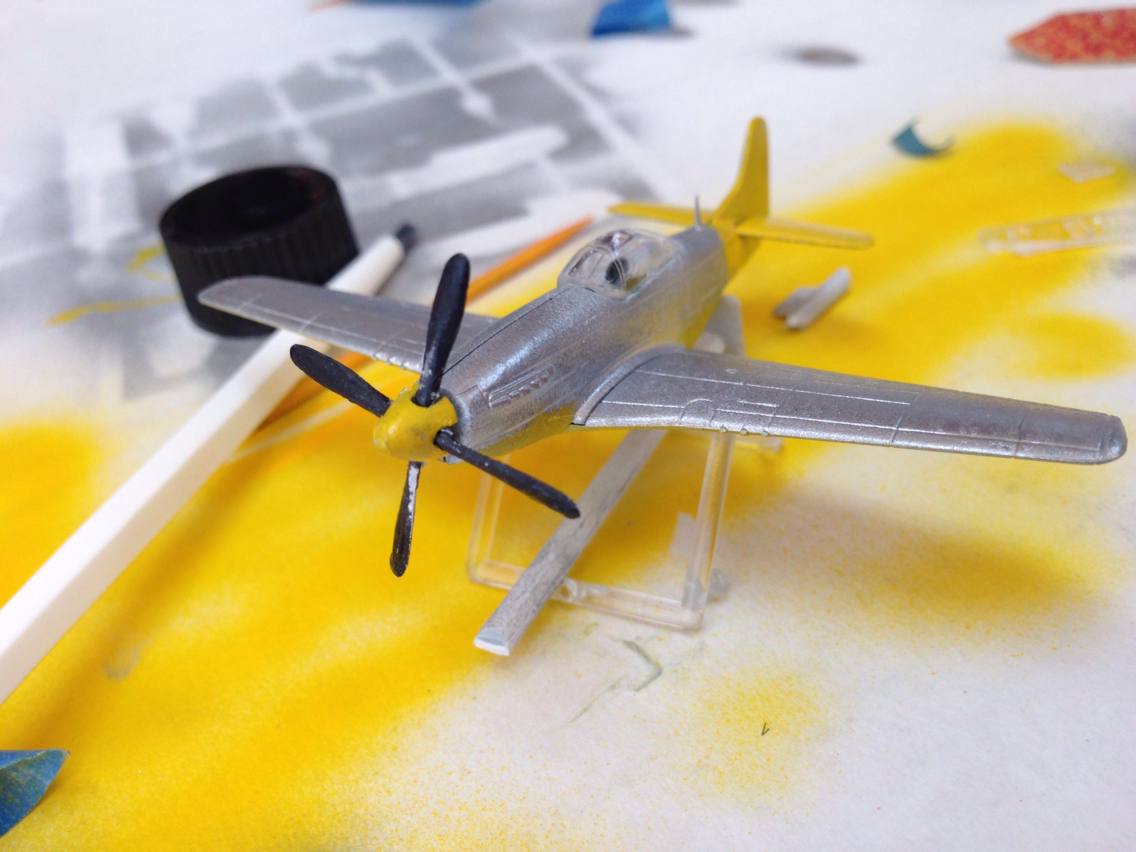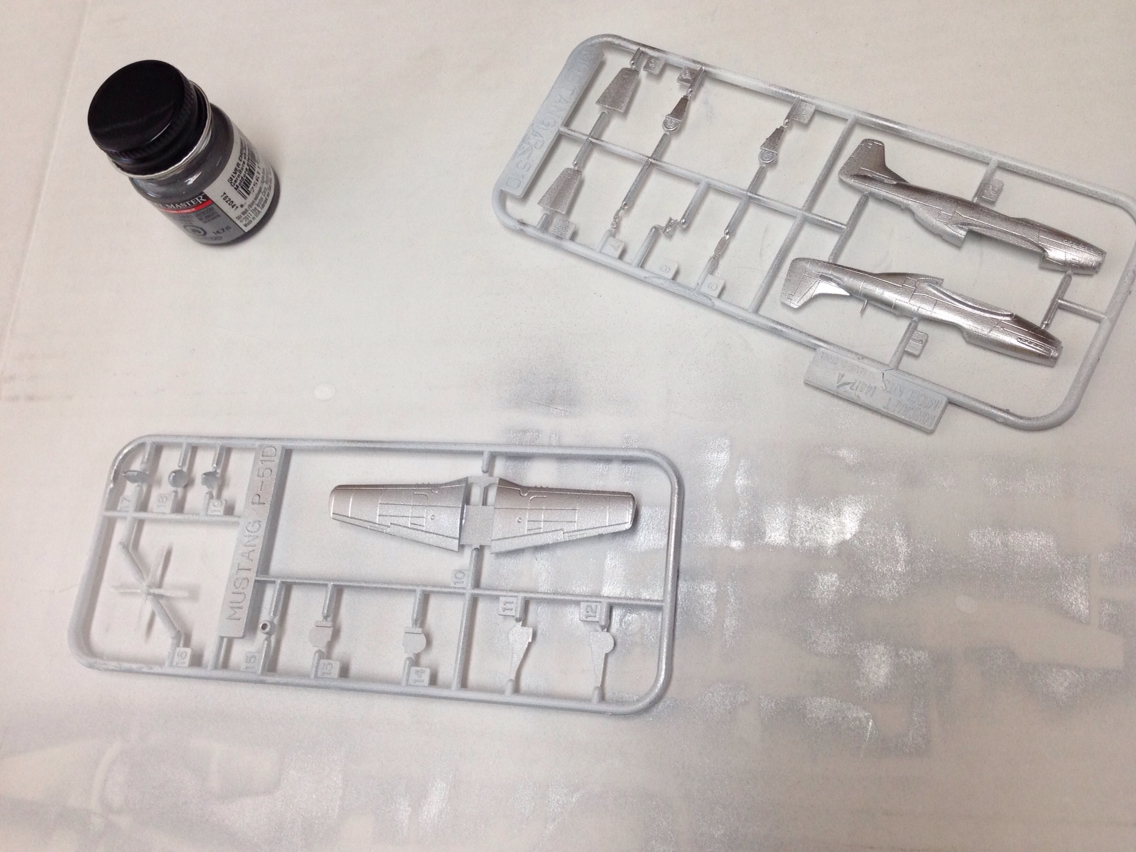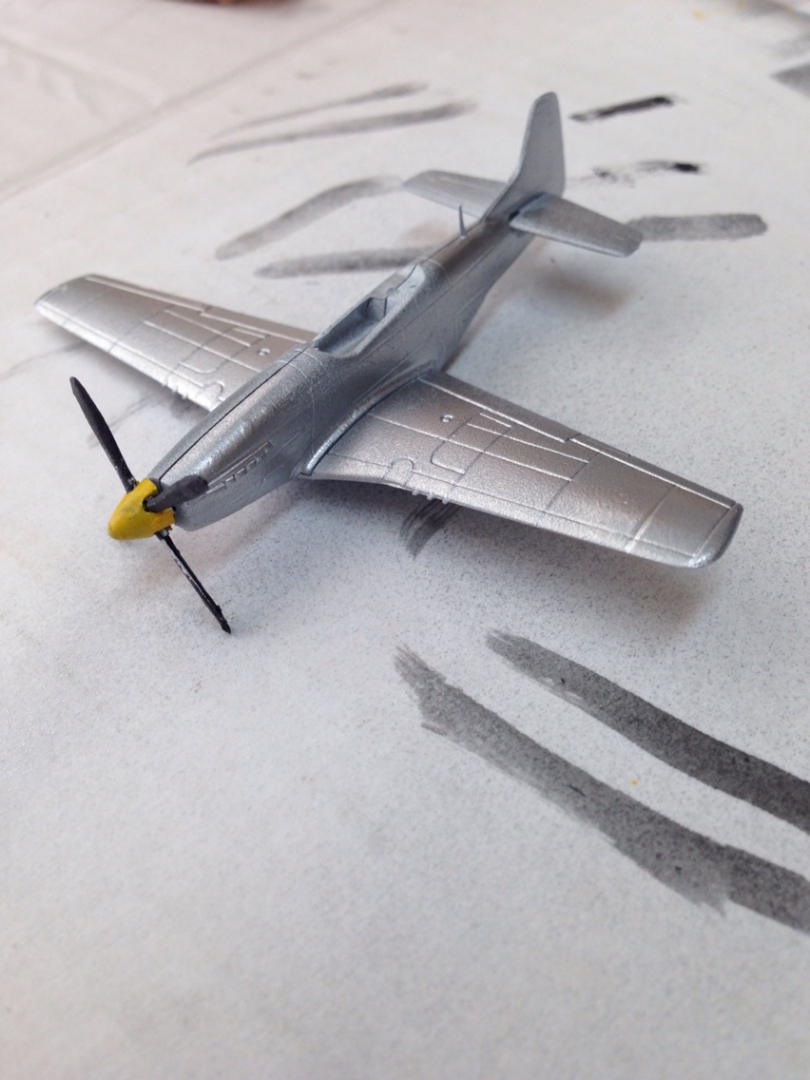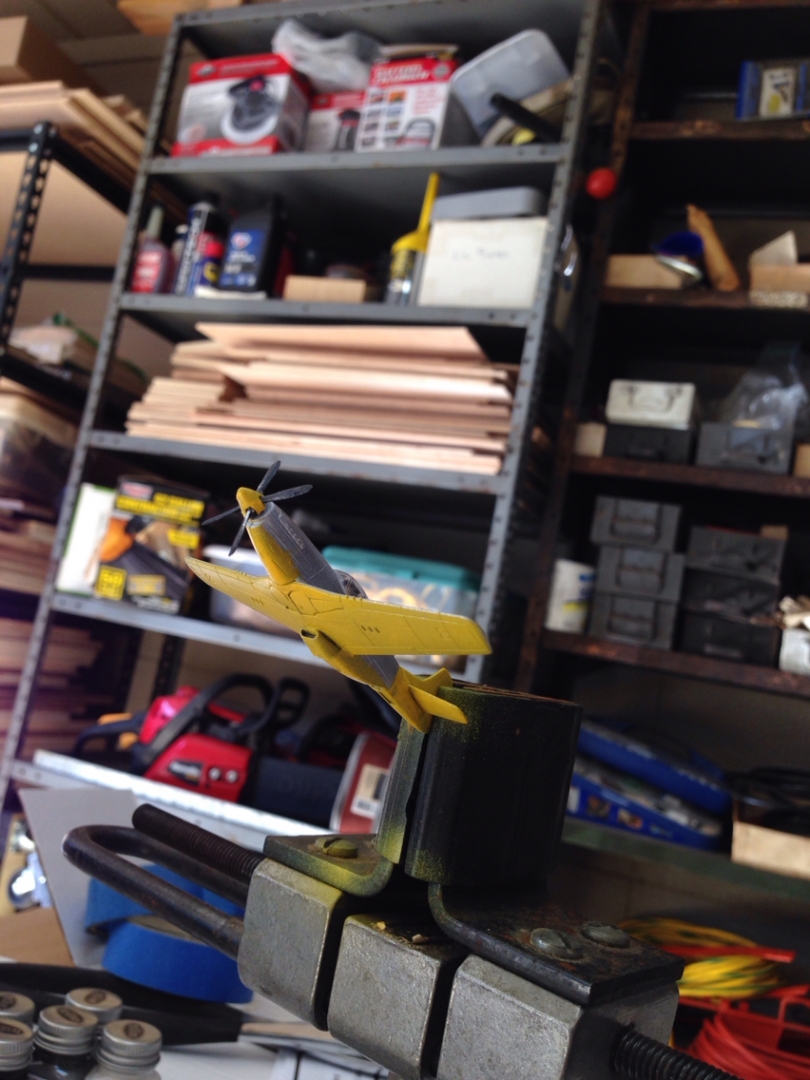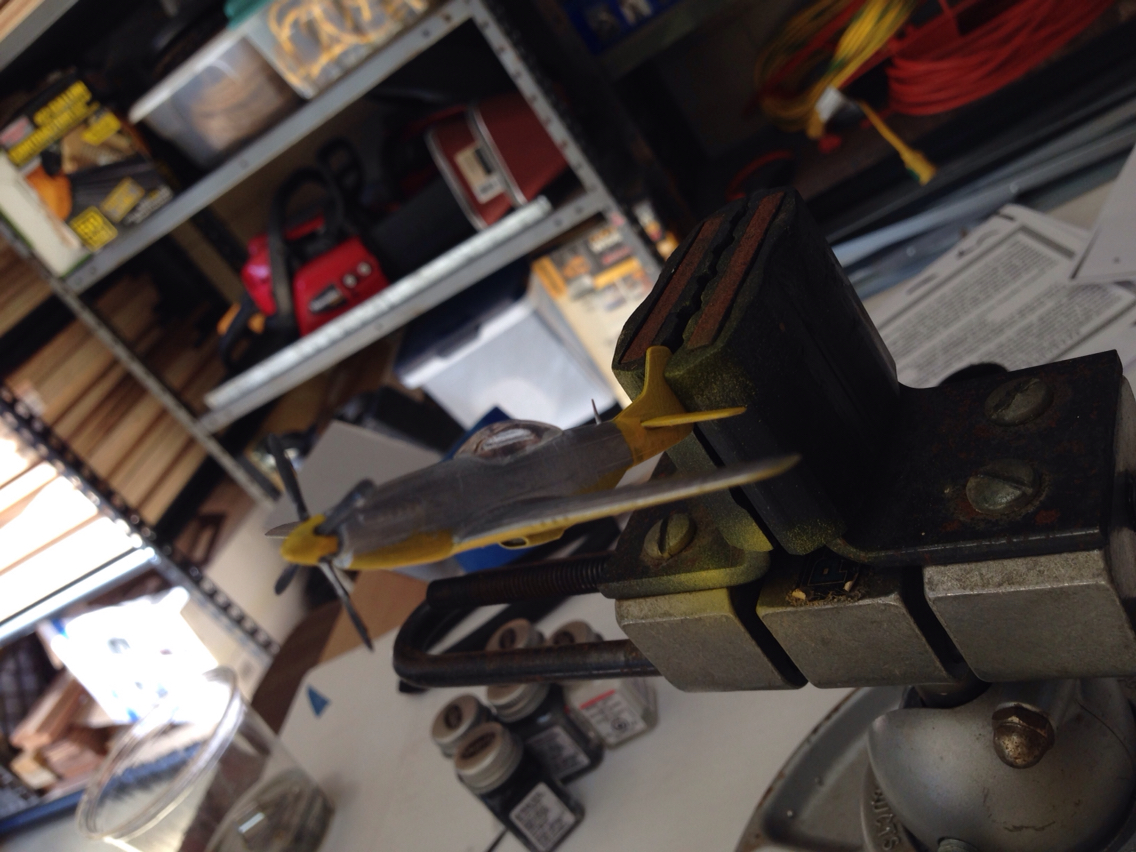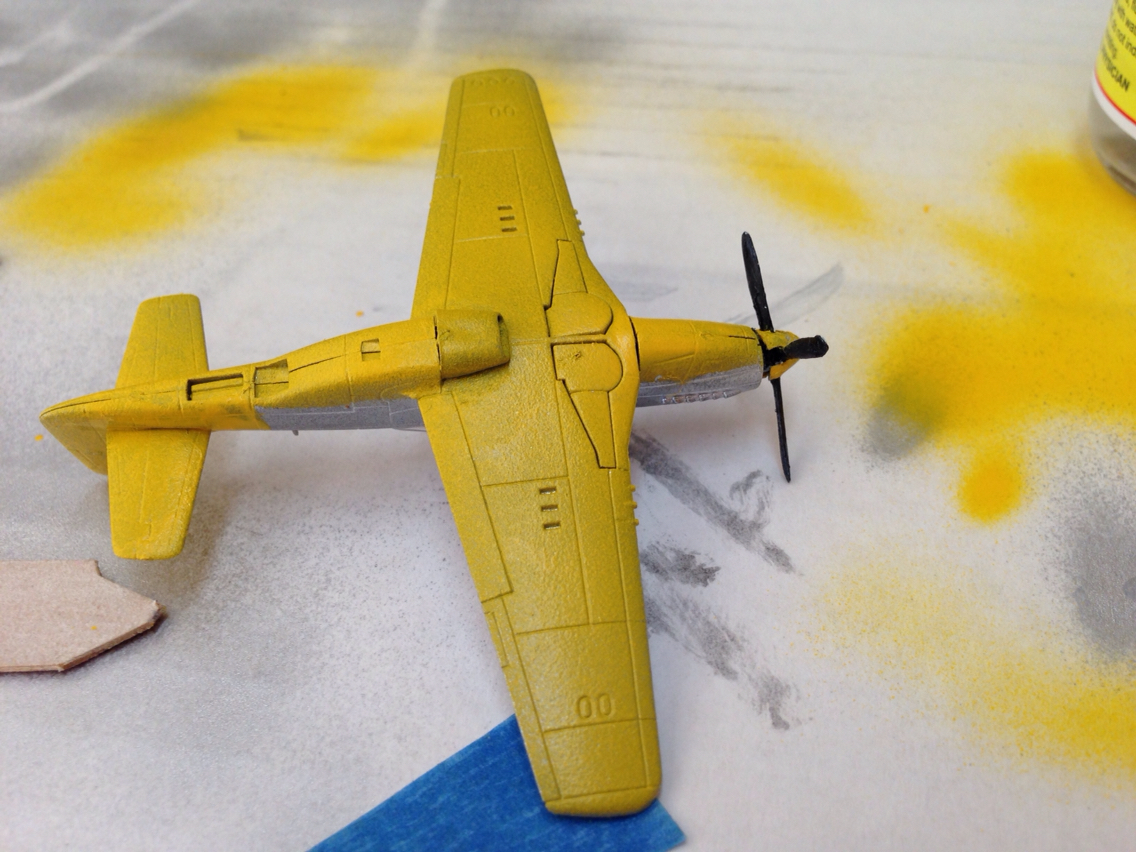Minicraft 1/144 P-51D "Old Crow" - Paint Scheme: German Captured Aluminum & Yellow
This is my brother and I’s first model and our first time using an airbrush and we would greatly appreciate any feedback that you could give us.
Step Zero - Taking note of the instructions and the sprue:
This is the most important part just because how the instructions flow, how many parts there are, and how the parts fit together dictate how you will proceed. We noted that the landing gears were too tiny for us to reliably glue in and we also noted that we would have to paint the prop and the spinner on the sprue due to how fragile they were. None of the parts appeared warped, malformed, or had any other issues.
Step One - Painting the aluminum base coat:
We decided, with how the model goes together and how few and small the parts were, we were going to airbrush the base coat of aluminum onto the parts before we remove them from the sprue. For the aluminum we airbrushed “Aluminum Chrome Trim” enamel paint to achieve that freshly cleaned/polished sheen that you see on some P-51s. We used a “Flat Black” enamel for the propeller and a “Gloss Yellow” acrylic for the spinner, it was the only yellow on hand.
Step Two - Gluing it together:
This is probably the most time consuming part of the project just due to the amount of time it takes to ensure everything is secure and how finicky all the parts can be to put together. The single hardest part was the Horizontal Stabilizer, the “pin/slot” was as thick as a fingernail and they kept falling out.
Step Three - Painting the secondary color and the cockpit:
Although you cannot see it since it is too late, these pictures were taken right after painting, I covered everything I did not one to be yellow with a layer of painters tape. We airbrushed the exposed skin parts with a “Glossy Yellow” acrylic and mixed 1-2 cc “Flat Green” enamel with 1-2 drops of “Flat Black” enamel and we used a small detail brush for the interior. We did run into some issues where the paint pooled in some areas and the tape did not adhere fully.
Step Four - Finish the model and final thoughts
I had to touch up a few spots of paint and I notice where we went in too hard with the air-brush. Using sprue scraps, I created a little display stand. The paint scheme is partially based on this P-51 that was captured by the Germans, but we decided against the green cap and the marking. We did not do the marking because of how small the model is, smaller than my palm.
We were originally going to start working on a Revell 1/48 F-16, but we have observed that 1/144 was easy to do because there were not many parts, but painting, detailing, and such was very hard. From what we can tell, 1/48 is easy to paint because of how big the parts are, but there are a lot of them and it appears to be too complex for our current ability. Our next model will be a 1/72 Revell ME 262 A-1a.
